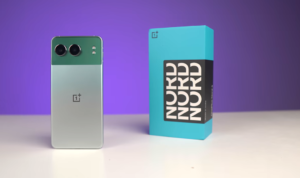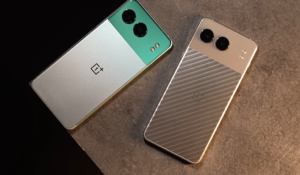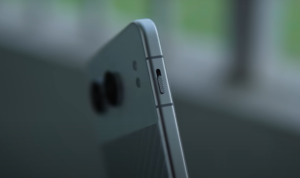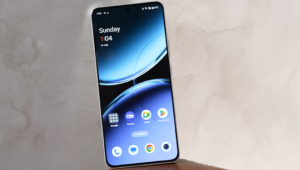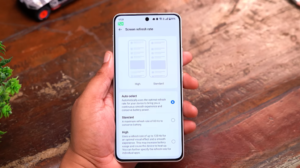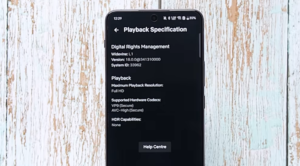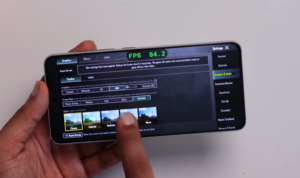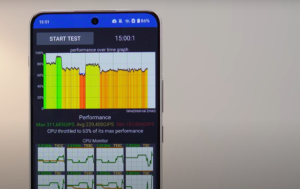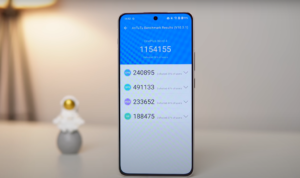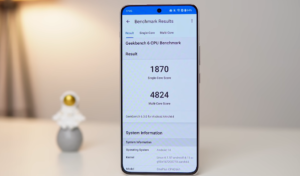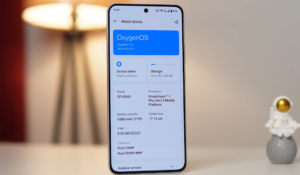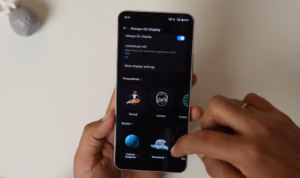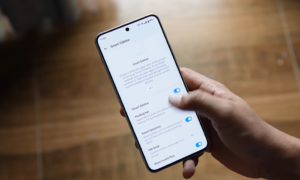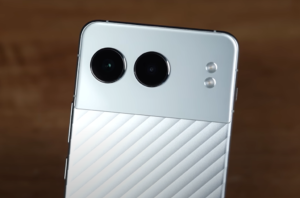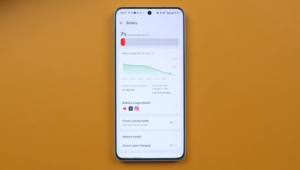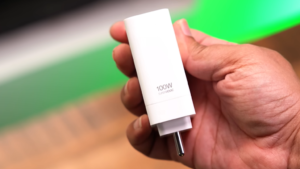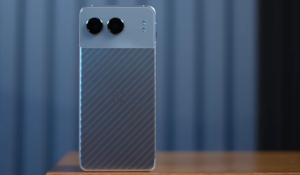Will the OnePlus Nord 4 make a status for the brand out there?
The OnePlus Nord series is one of the brand’s most popular smartphones because it combines some of the best features from the OnePlus flagship series with the OnePlus Nord CE series. It strikes the right balance between the OnePlus flagship series and the OnePlus Nord CE series. Combined with that, the pricing for the Nord series has always been aggressive.
With each Nord series, we have seen prices soaring, which may or may not appeal to all, but definitely with each generation, there have been some upgrades and downgrades. Last year, the OnePlus Nord 3 (Review) was a well-put-together offering in the Nord series as it brought some excellent specifications for the price, and now the OnePlus Nord 4 brings a few upgrades.
Recently, the premium mid-range segment has gained much momentum, with smartphones from different brands launching each month, so the OnePlus Nord 4 will have to make a statement by settling itself. The biggest highlight of the smartphone is the metal unibody design. So, does the OnePlus Nord 4 provide the right balance of everything, and is it worth buying?
Let’s find out in the full review.
OnePlus Nord 4 Design:
The OnePlus Nord 4 is unique and striking in terms of design. Its complete metal body recalls older Pixel smartphones, and it is available in three different colour variants: Obsidian Midnight, Mercurial Silver, and Oasis Green. All three variants have the same metal body build, but the design is slightly different on each.
The back is completely flatter, and even around the edges, the sides are slightly less curved than those of the OnePlus Nord 3. All three variants have a dual-tone finish. The top half has a shiny glass finish that is reflective and houses the dual cameras horizontally along with dual LED flashlights placed horizontally, whereas the lower half has a smooth matte finish that provides a solid grip while holding the phone.
If you consider Mercurial Silver, the lower half has a stripped texture on its lower half which is not seen on the other two variants. Both the Obsidian Midnight and the Oasis Green variants have a similar design with no such patterns in the lower half. The OnePlus Nord 4 also brings a slight upgrade with the IP65 rating over the IP54 rating on the OnePlus Nord 3 thus making it dust and water-resistant.
The OnePlus Nord 4 is slightly heavier at 199 grams compared to 193 grams of weight on the OnePlus Nord 3 since the former has a slightly larger battery. Around the sides, the smartphone has a thickness of 8mm which houses the aluminium frame that houses the power button with a set of volume buttons on the right side whereas the left side houses the OnePlus signature alert slider with three different modes to switch – Mute, Vibrate, and Ring.
At the bottom, there is a USB Type-C port, a loudspeaker grille, a primary microphone, and a dual SIM card slot that houses two SIM cards. There is no additional slot for microSD card storage expansion and also no 3.5mm headphone jack is present. On the top, there is a secondary speaker output, a secondary noise-cancelling microphone, and an IR Blaster to control various devices like air conditioners, televisions, etc.
On the front, there is a single punch hole in the display located at the top at the centre. The smartphone display has even smaller bezels compared to the OnePlus Nord 4 and in terms of protection, it is protected by Panda glass. Overall, the build and design is a good upgrade over the OnePlus Nord 3 and definitely impresses with its unibody metal design.
OnePlus Nord 4 Display:
The OnePlus Nord 4 has a larger 6.74-inch Full HD+(1240×2772 pixels) Fluid AMOLED display with a screen-to-body ratio of 20:9. This display size remains unchanged from its predecessor i.e. OnePlus Nord 3. This display is a 10-bit one so you get great colour reproduction and viewing angles. Just like the OnePlus Nord 3, this one also has support for a 120Hz refresh rate.
Talking about the refresh rate, it is an LTPS panel where you have three different settings to choose from – Auto Select, Standard, and High. There is also an additional option for app specific rate which when turned on lets you choose the refresh rate you can set for the application to refresh which is a good move. Turning on the Auto-Select mode usually refreshes the display at 90Hz for most of the applications.
Switching to the High mode does show a 120Hz refresh rate for fewer applications like during gaming, and mostly for all other applications but it does switch between different specific refresh rates depending on the content in the display. Setting the display to Standard mode restricts the display to refresh at 60Hz only which is good for extended battery life.
Combined with the 120Hz refresh rate, you get a 240Hz touch sampling rate for faster touch responses. In terms of display brightness, the display can reach a peak brightness of 2150nits which is a slight improvement over the OnePlus Nord 3 and the normal brightness hovers somewhere around 600-700nits which is good. Under High Brightness Mode, the display can reach a brightness of around 1500nits.
Under direct sunlight, the display has good visibility under sunlight. There is also an Extra Brightness Mode for enhanced brightness. In terms of colour reproduction on the display, there are three different settings to choose from – Vivid, Natural, and Pro which further consists of Cinematic and Brilliant where if you choose Vivid and Pro modes, then the display provides punchier colours and covers the DCI-P3 colour space.
On the other hand, the Natural mode provides close to natural colours with less saturation and covers the sRGB colour space. The display of the OnePlus Nord 4 has support for HDR on YouTube and there is support for Widevine L1 making it easier to stream HDR content on OTT platforms but currently Netflix does not have support for HDR. The display houses an optical in-display fingerprint scanner that works faster and is accurate.
OnePlus Nord 4 Performance:
The OnePlus Nord 4 sports a powerful Snapdragon 7+ Gen 3 chipset which is also found on the similarly priced Realme GT 6T. Since the chipset is based on a 4nm process and coupled with an Adreno 732 GPU, it handles almost all tasks with ease without breaking a sweat. It is good to see a Qualcomm chipset on the OnePlus Nord series after a longer time as the OnePlus Nord 3 came with a Meditek Dimensity 9000 chipset.
In terms of all the lighter tasks like scrolling between webpages, streaming social media, etc. and all heavy tasks like playing games like COD Mobile, rendering videos, taking photos and videos, etc. everything ran smoothly. In games like BGMI, the OnePlus Nord 4 could easily achieve the combination of HDR graphics and Extreme frame rates thus ensuring smooth gameplay without much frame drops.
With the graphics set to Smooth and frame rates set to 90fps, the gameplay feels smoother as it almost maintains the 90fps mark and drops around 80fps which is very good. Even in games like Genshin Impact and COD Mobile at High graphics, the gameplay was smoother but very few frame drops were noticed as it could almost maintain 90fps gameplay.
In the CPU throttling test, the back of the smartphone could achieve a sustained performance of around 65-70 per cent which is not so good and there is some amount of thermal throttling noticed on the higher side. However, without the dedicated Performance Mode turned off, the sustained performance came around 75-80 per cent which is good with very minimal throttling noticed.
In benchmarks, the scores came out very good. In terms of network connectivity, there is support for good carrier aggregation and 13 bands of 5G. The OnePlus Nord 3 is available in three different storage variants – 8GB RAM with 128GB storage which comes with UFS 3.1 storage speeds, 8GB RAM with 256GB storage and another 12GB RAM with 256GB storage both of which come with faster UFS 4.0 speeds. However, the RAM type on all variants is LPDDR5X.
OnePlus Nord 4 Software:
The OnePlus Nord 4 runs on the latest OxygenOS 14.1 based on Android 14 out of the box. The look and feel of the user interface is almost similar to the OxygenOS 13 but now there are a couple of AI-specific features which are newer additions to the software experience. You get a lot of customizations where you can change icon shape, size, and colour, and also you can set different styles for AOD on the lock screen.
Other than that, you get multiple wallpapers to choose from, different animations for fingerprint scanners are present, and also there are a lot of multi-tasking features like Smart Sidebar where you can store some applications and use them by selecting the application in the bar by pulling the bar from the sides, Split View enables you to use two applications simultaneously, and Flexible Windows allows you to open different applications in a small window and use any time.
The Smart Sidebar has the File Dock feature which works like a clipboard manager and lets you crop an image, text, or links and use them in different applications. Other than these, there are some of the AI-specific features and one of them includes the AI Eraser in the gallery application which when used can remove an object in an image and adjust the image automatically.
Then there is the Smart Cutout feature lets you choose an object in an image by long pressing on that object and it makes a small cutout that you can various applications, and there is the AI translator which transcribes the notes and video recordings. There is the Auto Pixelate 2.0 feature which blurs the sensitive information regarding contact details, credit card/debit card details, or payment information in a screenshot while sending to a secondary person.
In terms of network connectivity, AI is leveraged for switching between internet sources depending on signal strength or areas having lower networks. OxygenOS has been known for its bloatware-free software experience but this time around, OnePlus seems to have added a few bloatware in the form of third-party applications which is annoying but it can be uninstalled.
However, the presence of Hot Apps on RealmeUI and ColorOS is a huge disappointment as it throws in a lot of notifications and does unnecessary security scans while downloading an application from the Play Store. However, the biggest improvement is in terms of software updates as the OnePlus Nord 4 will receive another four years of AndroidOS updates and six years of security patches which makes it the best in the segment and next to Samsung.
OnePlus Nord 4 Cameras:
The OnePlus Nord 4 sports a slightly different camera setup which includes a dual camera setup having a 50MP f/1.8 Sony LYT600 sensor for the main camera that has support for OIS and an 8MP f/2.2 ultrawide camera. There is no more dedicated macro camera now. On the front, there is a 16MP f/2.4 camera for selfies.
The images from the primary camera come out with sharper details that have a wider dynamic range and have saturated colours in the background without any kind of oversharpening, and also the noise is barely present in the background. The white balance is handled very well and contrast works well even in HDR images. There is the 50MP resolution mode which can be used for slightly better details.
However, the 50MP images do save in 12MP by default and the images do have a cropped frame compared to regular images shot using the Photo mode. At night, the Auto Night Mode gets triggered automatically so the primary camera does a great job in terms of details that look sharper and have a wider dynamic range with saturated colours. Even the noise is very low in the background.
If you compare the images with the ones taken on its predecessor i.e. OnePlus Nord 3, then definitely you can see the image processing is slightly improved due to the Qualcomm chipset on the OnePlus Nord 4. Without the Auto Night Mode, the images came out with sharper details and good dynamic range but there is a slightly larger amount of noise in the background.
However, the exposure is well handled even in the darkest scenarios and even highlights in shadows are well controlled. The ultrawide camera does a good job in terms of details and the dynamic range is wide but around the edges, there is some amount of distortion noticed. The colours look saturated without any kind of oversharpening but clearly, the noise is present on the higher side.
At night, the images from the ultrawide camera do a good job in terms of details but mostly they look softer and the dynamic range comes out to be decent. The colours look saturated but there is some amount of oversharpening taking place in the background. The noise is on the higher side and also distortion is clearly present around the edges.
There is no macro camera here but you can use the primary camera for some macro shots by zooming in a bit which results in sharper details and good dynamic range with less noise in the background. With the primary camera, you can use the 2x zoom for images with sharper details and great dynamic range with less noise in the background.
The colours look saturated without any kind of oversharpening. In terms of portraits, the primary camera does a good job in terms of details, which look sharper, and the dynamic range is good. The edge detection is perfect, and proper background blur is implemented. When it comes to selfies, the front camera does a good job in terms of details, but the dynamic range is average, with almost less noise in the background.
The skin tones look natural but there is a considerable amount of oversharpening in the background. Regarding portrait selfies, the edge detection is good, but the details look slightly softer and have a decent dynamic range with some noise in the background. The primary camera can record 4K videos at 60fps whereas the ultrawide and the front camera are restricted to 1080p at 30fps video recording.
The video footage from the primary camera at 4K comes out with sharper details and good dynamic range, but noise is slightly on the higher side since EIS does not work at that resolution. When you switch to 1080p at 60fps, the Ultra Staedy Mode kicks in, resulting in almost no noise in the videos. Other than that, the videos have good dynamic range, saturated colours with no oversharpening, and exposure is handled well.
The videos from the ultrawide camera have slightly softer details. The dynamic range is good, but there is a considerable amount of noise in the background. However, the colours look true to life, but some saturation could have been better. The videos from the front camera have a good dynamic range, natural-looking skin tones, and less noise in the background, as EIS works properly.
OnePlus Nord 4 Battery Life:
The OnePlus Nord 4 sports a 5500mAh battery which is a slight increase in battery capacity by another 500mAh over its predecessor i.e. OnePlus Nord 3. Since now you get the powerful Snapdragon 7+ Gen 3 chipset along with OxygenOS 14.1, you can expect better battery life. In terms of normal usage which includes streaming social media, scrolling through webpages, etc., the smartphone easily lasts for two days with some charge left.
With the display set to High and with heavy usage that includes playing games for longer hours, attending calls for longer durations, taking images and videos using the camera, etc. the smartphone easily lasted for a day and a half with some charge left. The standard screen-on time came out around 6.5-7 hours with normal usage and with heavy usage, it came around 4.5-5 hours which is a slight improvement over the OnePlus Nord 3.
In terms of charging speeds, the OnePlus Nord 4 supports a 100W SuperVOOC charger which is a slight upgrade in capacity over the 80W SuperVOOC charger with the OnePlus Nord 3. The 100W fast charger takes the smartphone from 0 to 100 per cent within 40 minutes which is quite fast.
OnePlus Nord 4 Audio Quality:
The OnePlus Nord 4 sports a dual stereo speaker setup where the sound output is slightly louder in the bottom-firing speaker compared to the top speaker. The sound output has also been improved over the OnePlus Nord 3 and it does not feel distorted even at the loudest settings. There is the OHaptics which provides great haptic feedback and for enhanced sound output, there is the Dolby Atmos.
Verdict:
The OnePlus Nord 4 is a great offering from OnePlus in the premium mid-range segment as it brings a lot to the table despite the few shortcomings. Now talking about the strong aspects like a solid and unique metal body design, a great display along with dual stereo speakers for multi-media consumption, excellent performance and gaming capabilities, a solid battery life with faster charging, and a good set of cameras.
The software experience is good as you get a feature-rich experience with all AI features and the longevity of software updates has been improved here compared to the OnePlus Nord 3. There are a few areas where the OnePlus Nord 4 could have been improved. When it comes to the display, OnePlus has skipped an LTPO panel, and there is a lot of thermal throttling present which is a big concern.
The cameras are good but the ultrawide camera struggles when it comes to images in low light and even in videos, and the biggest disappointment is the presence of a few bloatware which harms the respect of OnePlus users out there. Though you get good gaming performance still does not match up to the standards of the gameplay as seen on the
POCO F6 (Review) as it has the slightly powerful Snapdragon 8s Gen 3.
So if you are someone who is looking for a smartphone with a solid build and design, a great display, good performance, a good set of cameras, and great battery life, then the OnePlus Nord 4 is a great option. When compared to the OnePlus Nord 3, there are very few upgrades like slightly better battery life, a better design, a better software lifecycle policy, and much better performance and gaming experience.
However, the software experience seems to be a letdown this time due to the presence of some bloatware and the main camera sensor is a slight downgrade compared to the OnePlus Nord 3. So if you do consider the above-mentioned upgrades, then definitely the OnePlus Nord 4 is worth the upgrade over the OnePlus Nord 3. But when you compare the competition out there, the OnePlus Nord 4 still proves to be a solid all-rounder in the premium mid-range segment with very few niggles.


